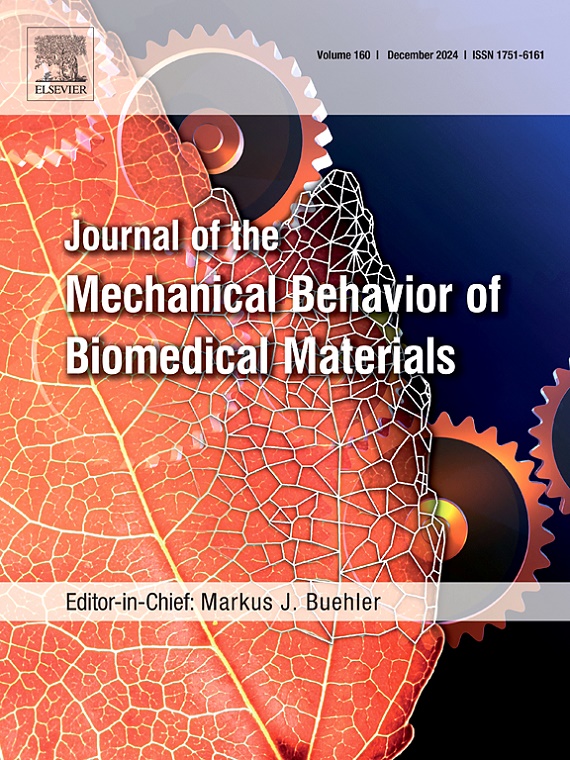Printing fidelity assessment and micro-mechanical characterization of FDM-printed PLA/HA composite for maxillofacial and oral applications
IF 3.3
2区 医学
Q2 ENGINEERING, BIOMEDICAL
Journal of the Mechanical Behavior of Biomedical Materials
Pub Date : 2025-04-01
DOI:10.1016/j.jmbbm.2025.106987
引用次数: 0
Abstract
The aim of this work is to assess the printing fidelity, explore the mechanical properties and optimize process parameters of FDM-printed PLA/HA composite samples for maxillofacial and oral applications. Pure PLA and PLA/HA composites with 20 % and 35 % HA content by weight were evaluated. The effects of printing temperature and HA loading on printing fidelity and mechanical properties, as well as the FDM printability of screws and patient-specific membranes, were assessed.
Square samples with holes and beam samples, designed with geometrical features comparable to fixation plates and guided bone regeneration (GBR) membranes, were FDM-printed and analyzed for dimensional accuracy and mechanical performance.
The results show that holes are geometrical features difficult to print with high accuracy and a printing temperature of 200 °C provides better accuracy and mechanical properties compared to 210 °C. Higher HA loading reduces printability fidelity and increases flexural elastic modulus while decreasing maximum flexural strength and strain. Prototypes of patient-specific GBR membranes and fixation screws were successfully printed using PLA/HA 20, demonstrating the feasibility of producing custom medical devices with FDM technology. Roughness analysis on GBR membranes in PLA/HA 20 revealed no significant differences between the external and internal surfaces or between different printing configurations. Moreover, the FDM printing process does not affect the homogeneous distribution of HA particles within the PLA matrix in PLA/HA 20 composite.
The results suggest that a printing parameters optimization procedure is fundamental for achieving the best performance of PLA/HA composites in terms of printing fidelity and mechanical properties. PLA/HA 20 shows promise as a biodegradable alternative to non-biodegradable materials such as titanium, which is commonly used for maxillofacial and oral applications.

求助全文
约1分钟内获得全文
求助全文
来源期刊

Journal of the Mechanical Behavior of Biomedical Materials
工程技术-材料科学:生物材料
CiteScore
7.20
自引率
7.70%
发文量
505
审稿时长
46 days
期刊介绍:
The Journal of the Mechanical Behavior of Biomedical Materials is concerned with the mechanical deformation, damage and failure under applied forces, of biological material (at the tissue, cellular and molecular levels) and of biomaterials, i.e. those materials which are designed to mimic or replace biological materials.
The primary focus of the journal is the synthesis of materials science, biology, and medical and dental science. Reports of fundamental scientific investigations are welcome, as are articles concerned with the practical application of materials in medical devices. Both experimental and theoretical work is of interest; theoretical papers will normally include comparison of predictions with experimental data, though we recognize that this may not always be appropriate. The journal also publishes technical notes concerned with emerging experimental or theoretical techniques, letters to the editor and, by invitation, review articles and papers describing existing techniques for the benefit of an interdisciplinary readership.
 求助内容:
求助内容: 应助结果提醒方式:
应助结果提醒方式:


